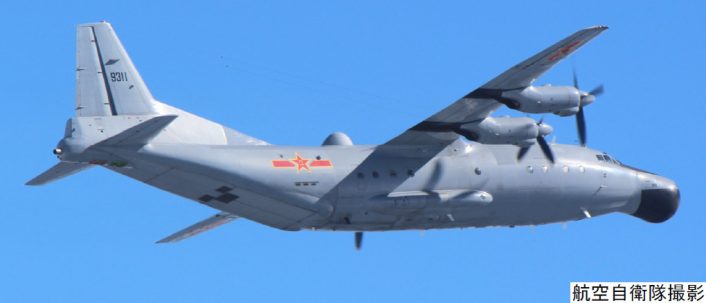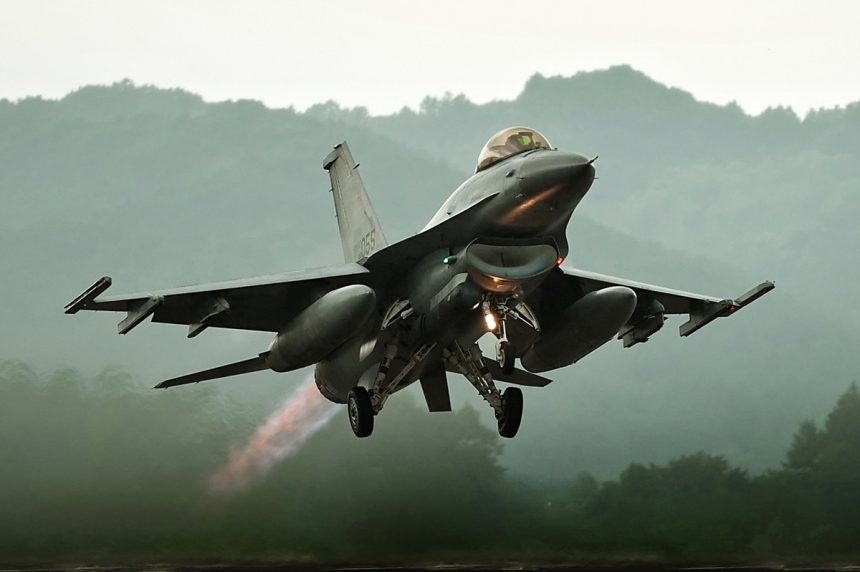South Korean F-15K Slam Eagles and KF-16s Reported to Have Responded.
It hasn’t taken long for things on the Korean peninsula to get interesting again following the brief lull in military drama during the 2018 Winter Olympics in South Korea.
News outlets from around Asia have reported an incident between Republic of Korea (ROK) aircraft and Chinese People’s Liberation Army Air Force (PLAAF) aircraft. According to the Korea Herald, “On Tuesday [Feb. 27] a Chinese People’s Liberation Army Air Force (PLAAF) fighter entered South Korea’s air defense identification zone (Korea-ADIZ, or KADIZ) for more than four hours without notifying South Korean authorities.”
The Korea Herald story went on to quote the South Korean Joint Chiefs of Staff as saying the Chinese aircraft, “…came close to South Korean territory, prompting the [Republic of Korea] Air Force to scramble fighter jets to monitor its activity.”
Additional reports from several Asian news outlets say that the Republic of Korea Air Force (ROKAF) responded by scrambling “more than 10 aircraft” (source: Korea Herald) that included South Korean F-15K Slam Eagles and KF-16 Fighting Falcons.
The type of Chinese “fighter” intercepted was not identified in reports we were able to access.
According to the South Korean Joint Chiefs, the Chinese fighter entered South Korea’s ADIZ at 9:34 am local time on Tuesday and approached South Korean territory northwest of Ulleungdo in the Sea of Japan, coming as close as 55.5 kilometers to South Korean territory. According to the report published in The Diplomat, after receiving warnings from the South Korean Air Force the Chinese fighter left the area at 2:01 pm. The Chinese fighter’s flight path required it to transit the Tsushima strait, between Japan and the Korean Peninsula. The report in The Diplomat went on to quote South Korean Joint Chiefs as saying, “Our military warned it [the Chinese aircraft] to stop the act of raising tensions that can trigger an accidental conflict through the South Korea-China [military] hotline and [pilot’s] radio communication”. The South Korean Joint Chiefs went on to describe the Chinese fighter’s flight path as “unusual” according to the report.
Chinese aircraft have previously violated South Korea’s ADIZ, but have usually done so on the western side of the Korean Peninsula or in the northern reaches of the East China Sea.
While various news outlets reported the Chinese aircraft in the most recent incident as being a “fighter”, one source, the South China Morning Post, published an article earlier this year on Tuesday, January 30, 2018 by reporter Kinling Lo that cited another incident of Chinese aircraft flying into the South Korean air defense identification zone (Korea-ADIZ or KADIZ) that identified that aircraft as a Chinese PLAAF Y-8 transport.
Kinling Lo’s report in the South China Morning Post is interesting because there are a number of electronic surveillance variants of the Shaanxi Y-8 also referred to regionally as the “Yunshuji-8”.
If reports of the type of aircraft detected in the late January incidents are accurate it is possible what the South Koreans may be seeing (but this is not verified) is an intelligence gathering variant of the Y-8 such as the Y-8J Mask, Y-8CB Cub/High New 1, Y-8JB Mace/High New 2 or Y-8G Cub/High New 3, although this latest variant is reported to be in use mostly along the Chinese/Indian border. According to several sources including the Modern Chinese Warplanes page on Facebook, one of these Y-8G aircraft, Y-8GX-3 (no. 30513) assigned to the 20th Division was reported as lost on Jan. 29, 2018.
One of the things we’ve learned from these incidents around the world along areas of controlled national airspace is that nations will try to construct an electronic order of battle by using flights in close proximity to a border. When their aircraft approach the border and the detecting country begins to interrogate the approaching aircraft a significant amount of intelligence about response times, tactics, electronic order of battle and other information can be collected. This is sometimes done by a surveillance aircraft itself making the flight or by sending another aircraft, such as a tactical aircraft as this most recent report suggests, to the border in question and then collecting data about the opposing country’s response by using some type of airborne surveillance platform such as the Chinese Y-8 ELINT aircraft previously mentioned.

While these incidents are certainly noteworthy and interesting, an incursion into an Air Defense Identification Zone (ADIZ) is not excessively ominous since these zones are considered sovereign or territorial air space and are unilaterally declared by states to monitor activity by foreign aircraft during an approach toward their own territorial airspace. It is worth noting these incidents since they often provide a fascinating insight into the air-to-air, air defense and electronic order of battle of both nations involved.
Top image credit: ROKAF









